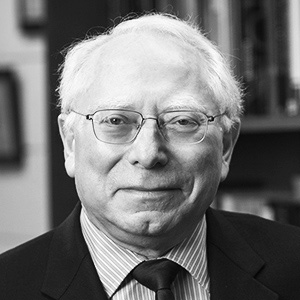Citation

Tamas Gombosi is an amazing scientist, educator, and leader with an impressive record of community service. Tamas is a top world expert in cometary physics, a groundbreaking researcher on the Venus ionosphere and Saturn magnetosphere, and the acknowledged leader in space weather modeling. The large number of students, postdocs, and junior faculty who learned from Tamas and were lead author on many of the resulting papers attests to his talent and dedication to graduate and postgraduate education.
Tamas was educated through his Ph.D. at Roland Eötvös University in Budapest, Hungary. He spent some time at the Space Research Institute in Moscow, where he worked on modeling and data analysis of the Venera mission to Venus with pioneers of the Russian space science program. He visited Michigan for 1 year and then returned to Budapest for two more as leader of the Hungarian element of the Vega mission to Halley’s comet.
Arriving back at Michigan as an associate research scientist in 1985, Tamas began a career that has led to endowed professorships in both engineering and space science, the founding directorship of the Center for Space Environment Modeling, 8 years as department chair, 6 years as editor in chief of the Journal of Geophysical Research: Space Physics, 3 years’ membership on the AGU Publications Committee, authorship of two widely used and acclaimed graduate textbooks, authorship of over 450 refereed publications, supervisorship of 26 Ph.D. graduates and 12 postdocs, chairing the science working group of the European Rosetta mission, chairing the Committee on Space Research’s Commission D and International Association of Geomagnetism and Aeronomy Division IV, and numerous other scientific and leadership positions in Michigan and the scientific community. As a scientist, educator, and leader, Tamas Gombosi is, indeed, a giant in our field.
Tamas leads a group of faculty and students pioneering the development of high-performance 3D magnetohydrodynamic numerical simulation models using solution-adaptive grids. This group has developed the Space Weather Modeling Framework that couples state-of-the-art models describing the complex Sun-Earth system. Tamas’s model computes the plasma environment from the solar interior to Earth’s atmosphere. The model is installed in the NASA Goddard Space Flight Center Community Coordinated Modeling Center for online use by the community and is by far the most used model of that center. Running faster than real time, it is uniquely suited for space weather prediction.
The 2020 Fleming Medal acknowledges Tamas Gombosi’s pioneering theoretical research on solar system plasmas and his development of an advanced numerical model for predicting space weather.
—James Burch, Southwest Research Institute, San Antonio, Texas
Response
I am greatly honored to receive AGU’s 2020 John Adam Fleming Medal. This medal is awarded to one but earned by many. I am particularly grateful to my colleagues at the University of Michigan, who, 40 years ago, welcomed a foreign postdoc and gave him an opportunity to work on the most exciting space missions of the time. I am also grateful to my outstanding education in Hungary and the postdoctoral training I received at the Space Research Institute in Moscow from Konstantin Gringauz, Vitaliy Shapiro, and Alik Galeev. I am indebted to Andy Nagy, who not only discovered me in the no-man’s-land of space science but also mentored me through good times and bad times. I could not have received this recognition without my talented younger colleagues at Michigan. As I semijokingly remind everyone, I only hire people who are smarter than I am. I would also like to thank the 2020 Fleming Medal Selection Committee for this honor. I would also like to thank Jim Burch for nominating me and Tom Cravens, Andy Nagy, and Chris Russell for supporting my nomination. Finally, I would like to thank my wife of 51 years for her unwavering support and my children and six grandchildren for all the challenges and joys of the life I am lucky to live.
During my scientific career I have had the privilege of working on some of the most exciting space missions of our times. Starting with Venera 9 and 10, the first mission to orbit a planet other than Earth, and followed by Pioneer Venus, Dynamics Explorer, Venus-Halley, Cassini, Rosetta, Stereo, Solar Dynamics Observatory (SDO), and Magnetospheric Multiscale (MMS), I was given many opportunities to explore the many mysteries of our solar system. These missions were made possible by the dedicated work of thousands of people whose names do not appear on the author lists of discoveries. I am eternally grateful to them.
On a personal note, I am humbled to stand here today. It took three generations, from my village-to-village peddler great-grandfathers to my sister and me, to become first-generation college graduates and Ph.D. scientists and for me to receive one of the highest honors a space scientist can receive. I am grateful to my parents, who had the strength to rise from the ashes after the Holocaust and instill the value of knowledge and learning in me: “Nobody can take away the knowledge in your head.”
—Tamas I. Gombosi, University of Michigan, Ann Arbor
Citation:
(2021), Tamas I. Gombosi receives 2020 John Adam Fleming Medal, Eos, 102, https://doi.org/10.1029/2021EO158487. Published on 19 May 2021.
Text © 2021. AGU. CC BY-NC-ND 3.0
Except where otherwise noted, images are subject to copyright. Any reuse without express permission from the copyright owner is prohibited.
